Video
tumblr
We saw a lot of traditional bands like this in Cambodia. It's comprised of people who were injured, indirectly by war. I loved the music they made. Seemed perfect for the setting.
0 notes
Photo
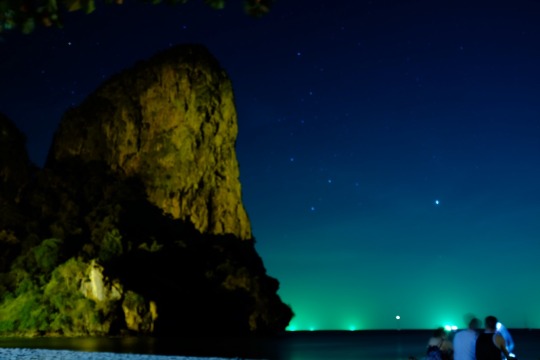
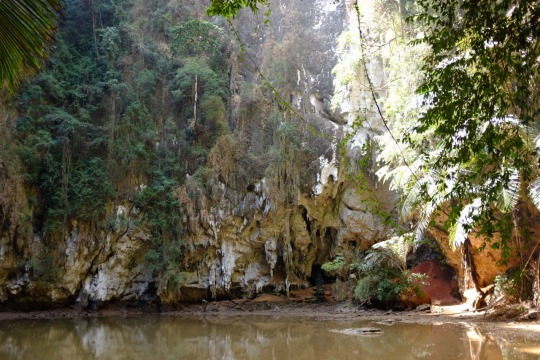
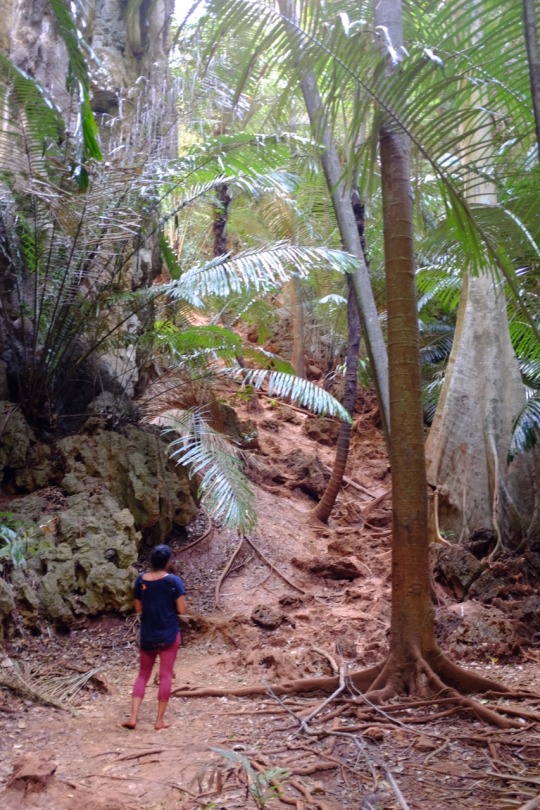


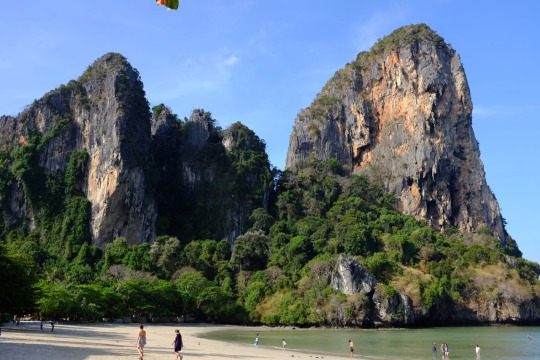


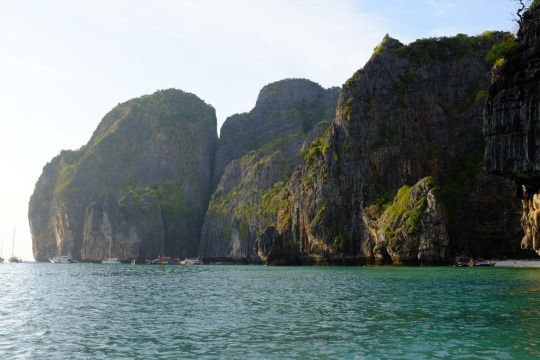
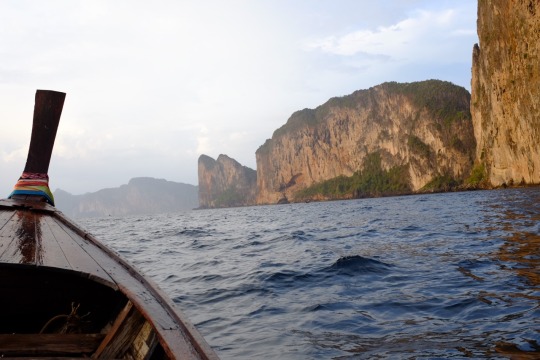
I write this post from the comfort of my own living room in my own apartment in New York City. Walking in yesterday, it felt at first like yet another in a seemingly endless string of hotel rooms. But as my eyes adjusted I saw my keyboard. My surfboard! My bike! Things! That are mine! That are familiar! In the kitchen, my blender, and dishes, and cookware. Joy! What joy in familiarity. What comfort. What ease. Ah yes. Travel is great indeed, but it’s like Dorothy said, “there’s no place like home.” There also happens to be no place like the Thai islands. Above are some of my favorite shots from there. They were taken in and around Railay, Ko Lanta and Ko Phi Phi. Like almost everywhere I went in southeast Asia, I felt like I could have stayed longer. Alas, 10 days in paradise is better than 10 days not in paradise. Finally, a word to the wise: Do like everyone says and visit southeast Asia. Go with someone or better yet, go alone. There are so many more and varied experiences presented to the open-minded, solo traveler. And never forget Lao Tzu’s wisdom: “A good traveler has no fixed plans and is not intent on arriving.”
1 note
·
View note
Video
tumblr
I tried for ages to upload this video on the road but wasn’t able. A quick compression back here on my home machine and it’s good to go.
I asked to play her guitar and strummed out a few notes. When I handed it back this is what she played for me.
3 notes
·
View notes
Photo
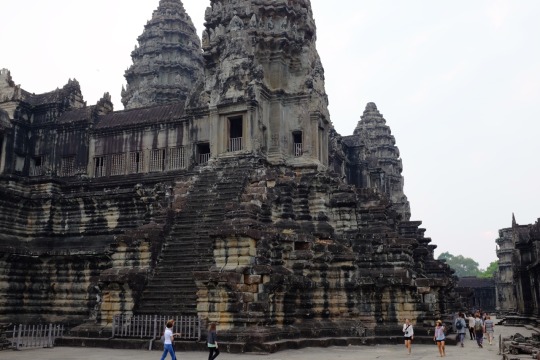
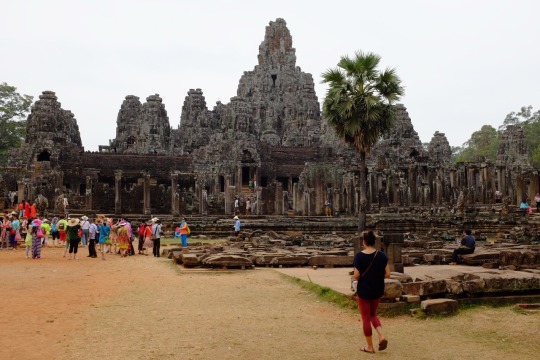
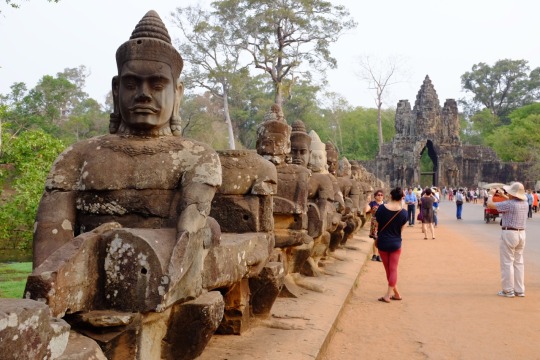

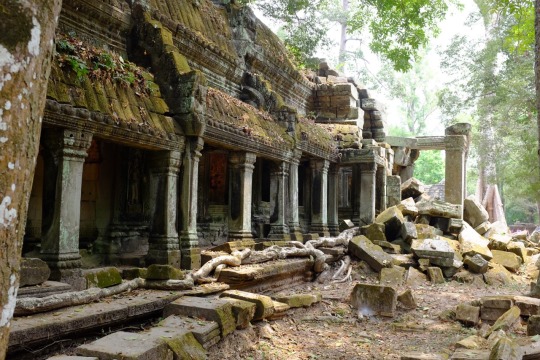
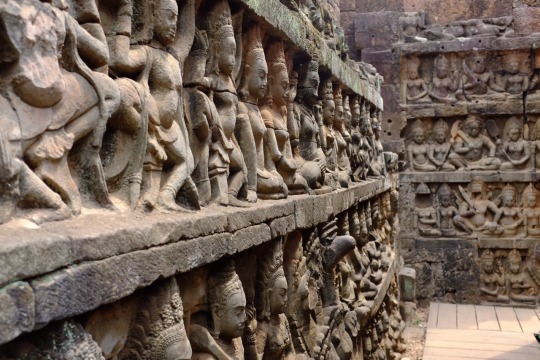
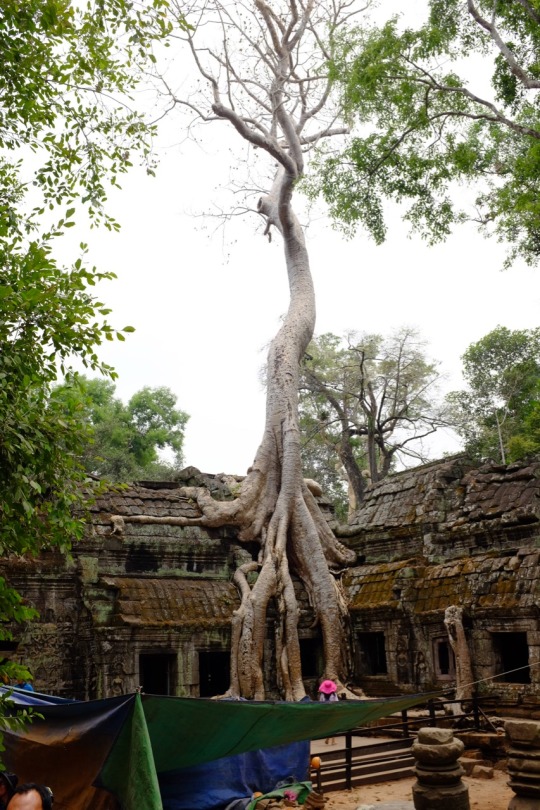

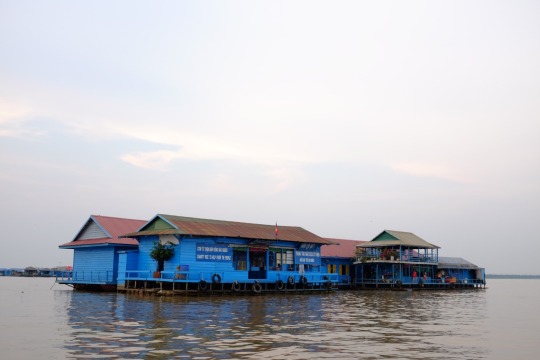
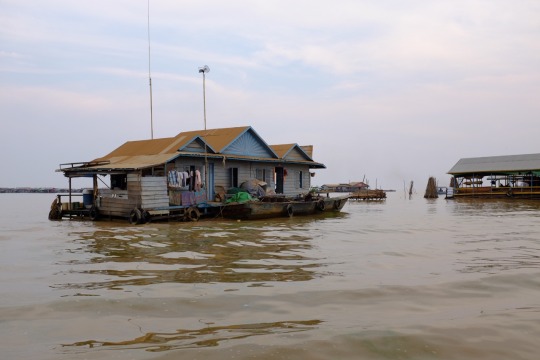
While Europe was in a period of relatively low cultural output at the beginning of the Middle Ages—around the 12th century—Angkor in Cambodia was at its height. The ancient capital is thought to have been home to over one million people, while at the same time, London’s population was only about 50,000.
Today there are over 1,000 ruin sites around the Angkor complex. The largest and most impressive is Angkor Wat—the world’s largest religious building. The detail and sophistication of the architecture is astounding. The size is hard to imagine. Approaching, it slowly begins to dawn on you as you walk along the nearly quarter-mile long causeway from the west.
Like many, we decided on a dawn visit to the temple to watch the sun rise behind it. Being the beginning of dry season, the sky was a bit grey and smoggy, diminishing the variety of colors on display. Still, dawn’s pink light was ethereal as it sillouetted the grand complex. In the early morning hours, the ragged stone towers against the sky were hauntingly beautiful.
With two days to visit all the sites, we saw many of the different architectural styles on display at Angkor. Having seen many ruins of the period in Ayuthaya and Sukhothai in Thailand, some of the buildings felt a bit “same, same” as they say, but situated as they were in the forest, they had a certain mystique I hadn’t seen in Thailand.
We saved the standouts and most popular temples for day two which included Angkor Wat, Angkor Thom, and Ta Prohm, made famous in the movie Tomb Raider. Each of the three is a unique and magnificent example of architecture and design of their respective periods.
After our second day of temple visits our tuk-tuk driver suggested we visit a lake village on nearby Tonle Sap, Southeast Asia’s largest freshwater lake. Passing lotus farms on the way we stopped for photos but the lake community itself was the highlight.
The village floats anchored in the lake. Every house, shop, and even the school is in the water and can only be reached by boat. It’s a unique way of life that I could scarcely have imagined. According to our guide, during wet season when the lake rises by some 10 meters, the village moves closer to the protection of the forest on the shore but always remains floating.
It would have been great to stay and see more of Cambodia but, it’s incredible how much we were able to see in only two days. It’s a short trip from Bangkok and one every traveler needs to make.
1 note
·
View note
Photo
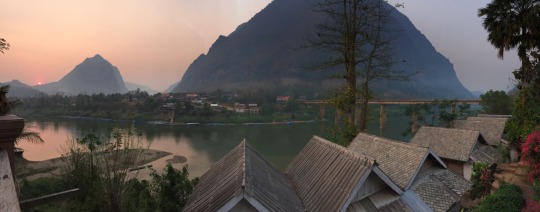
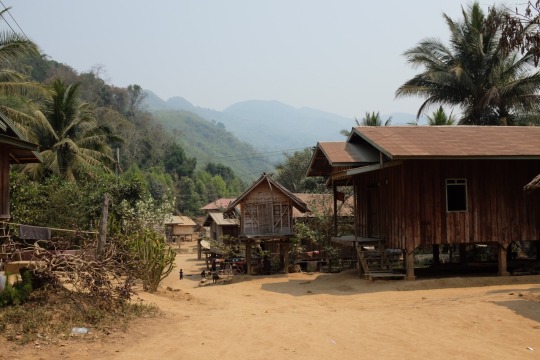
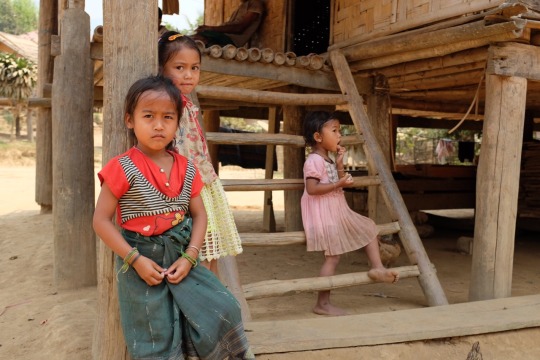
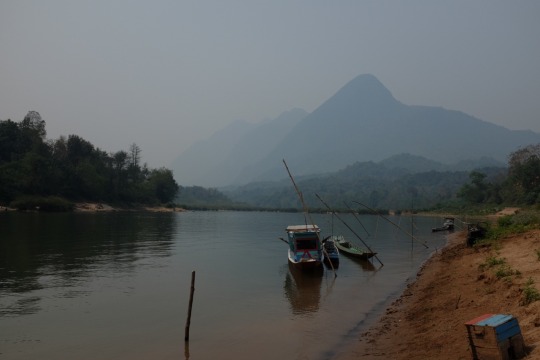

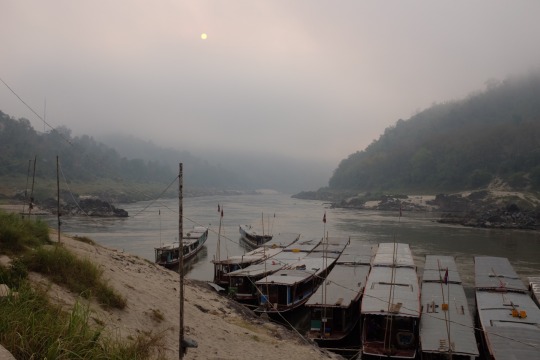
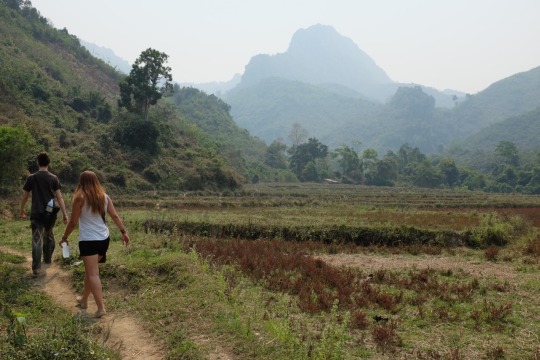

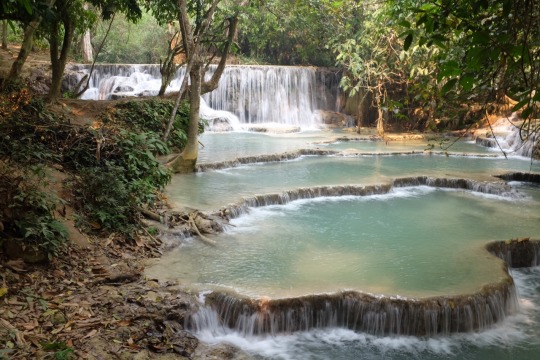
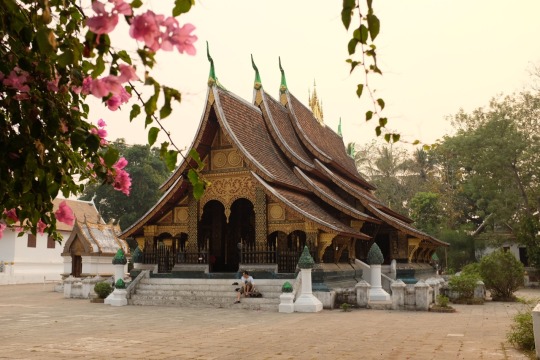
I started this post three times but I've decided that instead of a long winded explanation of my travels in Laos I'm going to let the images do the talking. They were taken from the Mekong River down to Luang Prabang then up the Nam Ou river to Nong Khiaw. If I could have spent a month there I would have. Laos had an amazing combination of gorgeous scenery, wonderful locals and adventurous and engaged travelers. Also, the ubiquitous Beerlao didn't hurt.
2 notes
·
View notes
Photo
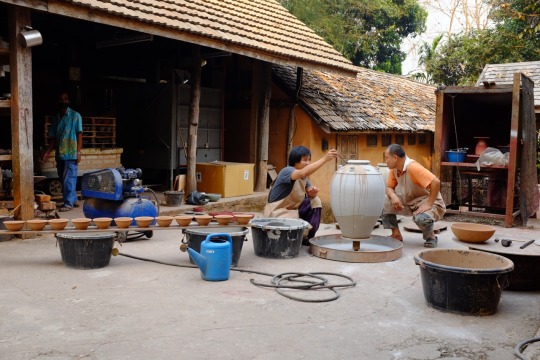

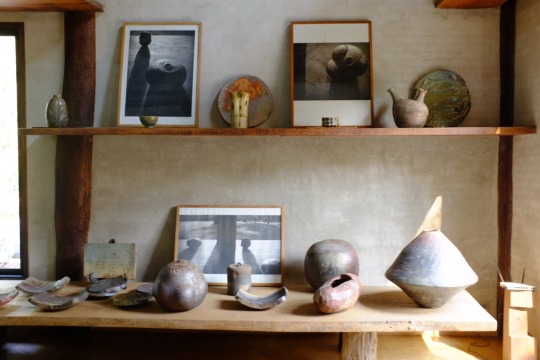
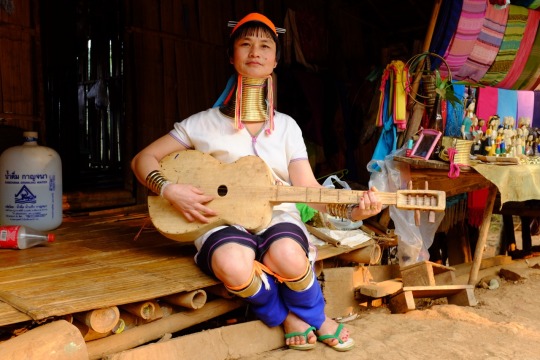
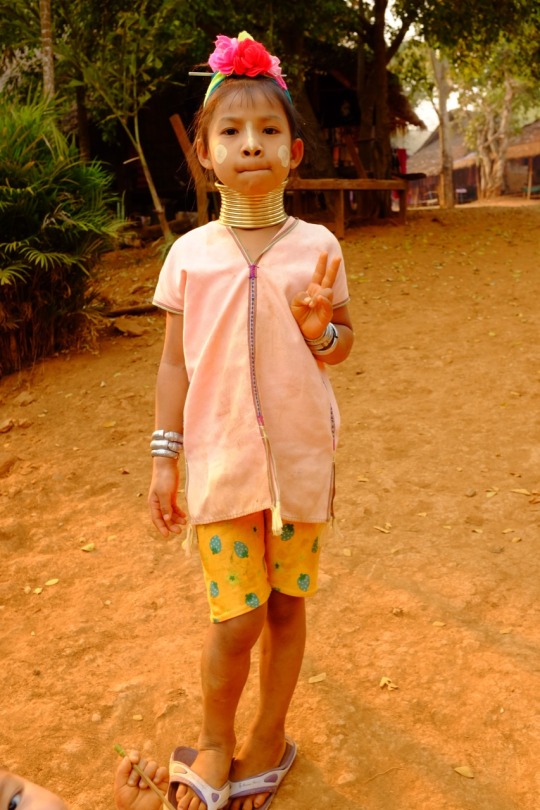
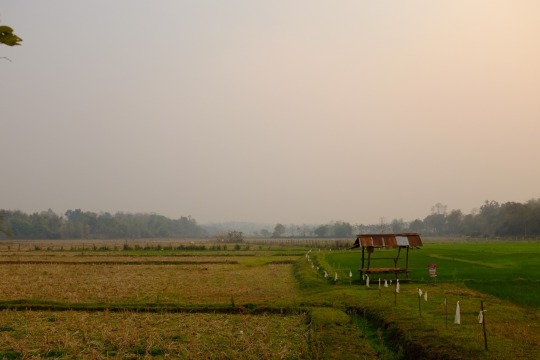

What started as a pleasant afternoon at a famed Chiang Rai ceramics studio turned into a shocking confrontation with a grim reality of modern Thai tourism. The plan was to rent a motorbike and head north 15km or so to get to the open studio of Doy Din Dang Pottery. It's owned by a Thai man who studied in Japan under a local master. He now runs the studio situated in the hills where all materials, including clay are gathered on the property. The name alone sold me. Upon arriving I found I was the only visitor so I strolled aimlessly around the property and into the buildings displaying their work. I found a couple pieces I loved and bought them not knowing how I might get them back to Chiang Rai much less back to America. I put the small one in my backpack and the large one between my legs on the step through motorbike I'd rented. I almost felt like a real Thai then. I just needed someone else riding on back. Leaving the property, I decided to head out the dirt road I was on just a bit further. I'd seen signs for "Hill Tribe Community" a bit further on. Odd, I thought, that it was so close to Chiang Rai. In 5 minutes I was parking the bike and walking to the entrance. There was a tour bus but other than that it seemed rather empty. I paid my entrance fee and followed the map to the first tribal "village". What awaited was a depressing collection of five or so stilted wood-paneled homes dotted haphazardly across a red-clay hill side. Dressed in what appeared to be traditional garb, a few of the older women seemed to be going about their daily routine. Some of the younger ones, also in traditional clothes, tried to entice me to the souvenir stands selling the same wares I'd seen a hundred other places already. Suddenly I felt ashamed of my visit. I continued through the next few "villages" representing other tribes from nearby regions hardly bothering to look. It felt like I was in a human zoo. The last section was where the Padaung lived. The women famously wear copper wire around their necks, appearing to slowly stretch them over their lifetimes. Later, reading, I learned they're not actually extending their vertibrae but pressing their collarbones, shoulders and ribcages down. Pleasant thought but apparently there's no real harm done to the body and it's possible to remove the coils and rehab the neck muscles to support the head again. Walking into the village I saw a woman playing what looked like a guitar. I listened to her play and when she stopped, I asked if I could give it a try. She happily obliged and I sat next to her to pick out a few notes. It had four strings and frets placed seemingly haphazardly across the fretboard. Some were set at microtone intervals and only under a single string, not across the neck. The rest made some kind of musical sense to me and I had a little country melody after a few attempts. After establishing that I was no Padaung guitar hero I handed it back and she started strumming while I sat next to her. She sang a slow melancholic tune and I wondered if it bemoaned the loss of her native home or a loved one or decried the sad situation in which she lived. When she finished I gave her a small donation and slowly made my way out of the village and back toward my motorbike. On my way I passed some of the younger girls who giggled and gossiped. Everyone looked relatively happy and healthy but despite the musical connection, I still felt rather unsettled about the whole situation. Leaving the way I'd come in, I hopped on my little 125 with the pottery I'd left at the front desk and started back for Chiang Rai. That night I did a bit of online research about the Thai hill tribe communities. I learned that the Padaung, a subgroup of the Karen people, come from the hills bordering Myanmar and Thailand and have been displaced because of war in the region. The Karens, including some Padaung, have been fighting against the Burmese government for years and consequently the Padaung have all be been targeted. Fearing for their lives many escaped to Thailand for refuge. Sadly though, the Thai government has only offered land to the displaced people and granted them no rights at all. That means no access to education, medical care or any other basic rights that come with citizenship. Instead the Thai government has put them on display in villages for tourists to gawk. If they're lucky they'll sell a souvenir or get a small donation. The entrance fee to the park probably helps too but other than that, they're virtually slaves caught in a very bad situation. It's unsettling to see such blatant exploitation first hand. I feel for the people stuck there and regret that my money went to further subjugate them. But if my money didn't go to them and people stopped visiting, would the Thai government let them become beggars and completely obliterate their culture? There are organizations that are helping to better the lives of the Thai hill tribes through education and healthcare. Hopefully one day they won't be an attraction at a human zoo and instead be able to have the same opportunities and ambitions as the people with whom they share a country.
1 note
·
View note
Photo
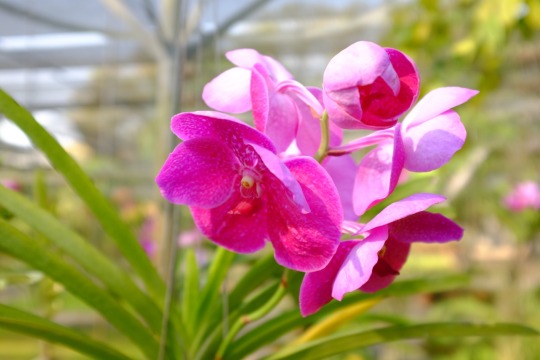
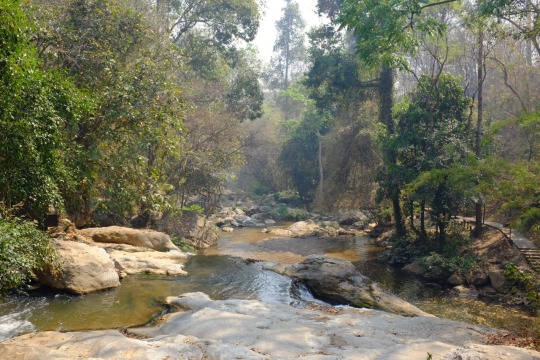
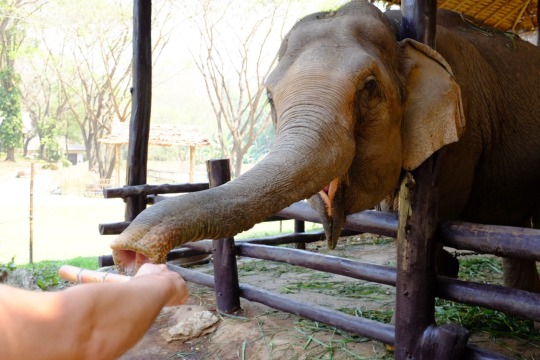
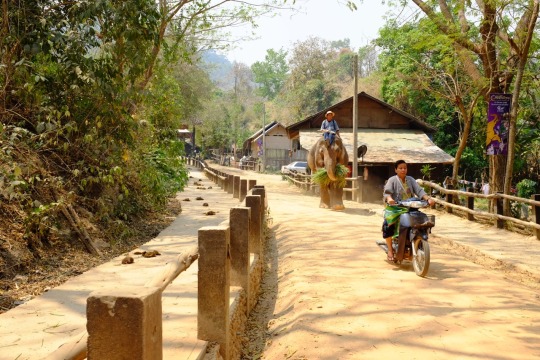
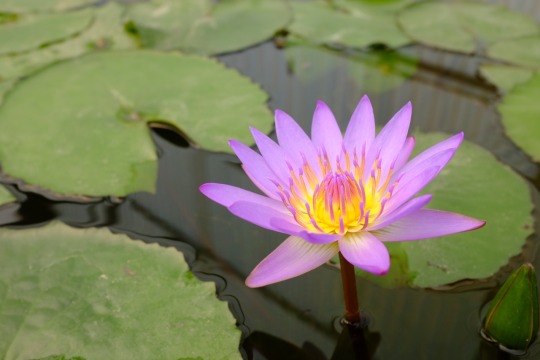

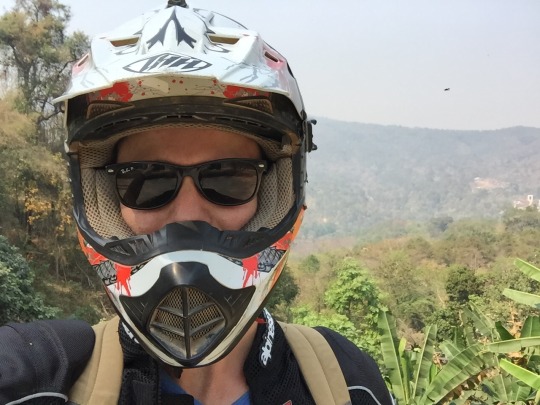

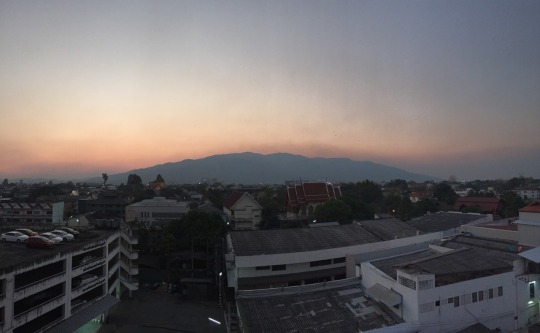
It was around 9am when I fired up the Honda CRF 250 that I'd rented from a local shop. I headed north from Chiang Mai toward Mae Rim on what many to think is one of the most beautiful rides in the region. Along the way there are myriad opportunities for sightseeing and adventure—from snake farms to ATV racing to botanic gardens and elephant camps. One could spend a week on the route but only having the bike for the day I had to be selective. The first stop was an orchid farm which I'd confused for the largest one in the country. That came later in the route. This one was cute and well maintained. I snapped a few shots then continued on my way. I got to the Mae Sa waterfalls and had a look around for 45 minutes or so. Just getting over a minor case of Thai belly, hiking in the heat wearing jeans and boots wasn't really my idea of fun. I headed back to the bike and onward. Next stop was one I had questioned making. It was an elephant farm. I'd read positive reviews about treatment of the animals there but they still did shows and offered rides which animal rights activists protest. However, elephants being my favorite animal, I couldn't resist when I got to the turn off. They were so close! I paid my entrance fee and walked in. A sign at the entrance shows 75 elephants at the camp each with its own trainer or mahout. There are stands you could buy bunches of small bananas and sugar cane both of which the elephants eat whole. I headed toward the elephant nursery and bought some food hoping to meet some baby elephants. What awaited was a mom and a baby elephant munching grass in a nice shaded pen awaiting the next visitor with treats. As I walked up both animals walked toward me and reached their trunks as far as possible to collect their snacks. Mom having the longer trunk took the lion's share. Even when I tried to throw one to baby, if it was a 50/50 chance, mama snatched it away. It was pretty funny and I still got a few to baby. What struck me was how extremely dexterous they were with their trunks. Taking a banana from my hand the elephant could distinguish one from the other. It would feel for the fruit and take only that, leaving my hand wet with elephant slobber. After I'd given all my treats then watched some other guys do the same, I walked away with a smile plastered to my face. I did one more lap of the camp before I left where I saw baby elephants "hugging" visitors with their trunks; taking their trainers' hats and putting them on the heads of visitors then back on their trainers; then waving goodbye when it was time to go. They're such massive creatures but so smart, so playful and amazingly gentle. It only helped solidify their place at the top of my favorite animals list. The Queen Sirikit Botanic Gardens, which was the actual location of the nation's largest orchid collection, was next on the list. It's a sprawling ground that really needs a full day to explore completely. I spent the majority of my time in the greenhouses. Each one was meticulous and seemed to represent just about every species of plant on earth. Possibly an overstatement but very impressive nonetheless. The last stop at the far end of the loop was the small town of Samoeng—a town of strawberry orchards that seemed to sell just about everything that could be made from the little berries. It was late afternoon and I drank a Fanta as the local ladies chatted nearby then paid and made the push back to Chiang Mai. As I approached, traffic became congested and years as a cyclist in NYC helped me blend in a bit better with the other Thai riders. By the time I got to the rental shop I was sweaty and sore and ready to be off that machine. I handed them my boots, jacket and helmet, relieved to take them off, and headed back to the hotel, exhausted and satisfied.
1 note
·
View note
Photo
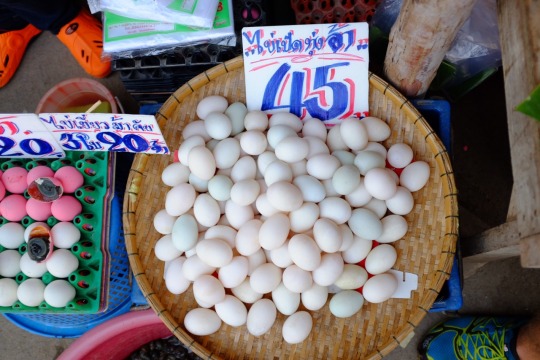

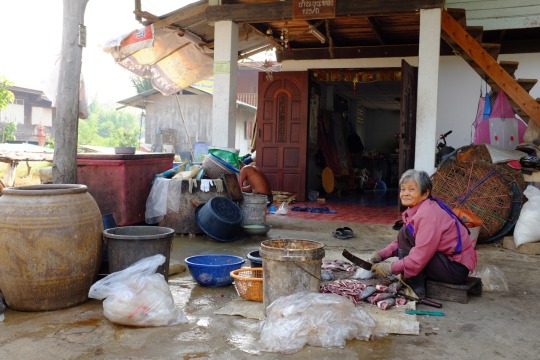

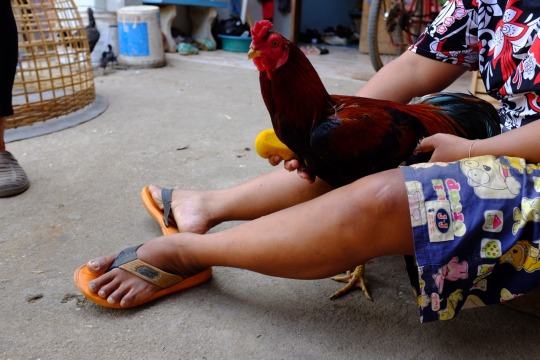
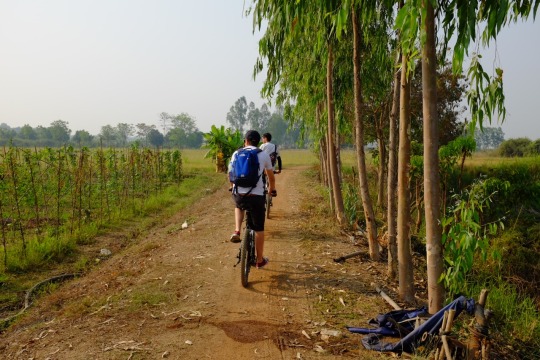


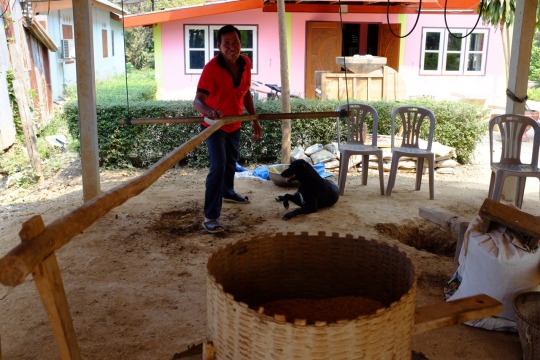
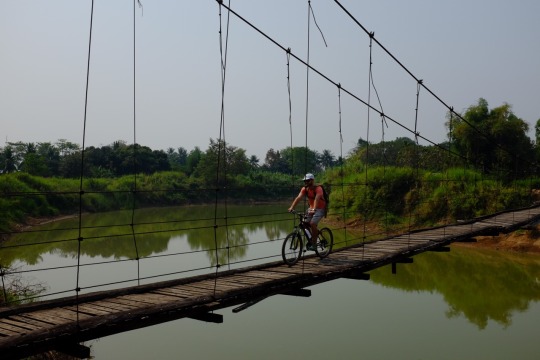
I booked the temple cycling tour by phone the night before but when I got there I found out the other four guests had booked the countryside tour. Rather than go alone with a guide to the temples—of which I'd see dozens in the past week—I chose to head out to the countryside and see something new. The group was two couples, myself, and our friendly, talkative, smiling guide, Yo. A young Dutchman born to Thai parents who all moved back to be near their ancestral home in Thailand. Arriving first at the market, we found locals selling all manner of local produce, meat and seafood, some of the latter which was still very much alive. Eels writhing in an inch of water, small catfish in not much more than that. There were snails and larvae and foul, oh my. We sampled what were referred to as century eggs: Eggs preserved in clay, ash, salt, quicklime and rice hulls, each egg packed individually to look like a small stone. It's a wonder this method of preserving was even discovered and even more a wonder someone put the brown-black jellied "white" or the sulphuric-smelling black yolk in their mouth. Upon tasting, it turned out the jellied "white" tasted like a salted hard-boiled egg and was quite palatable. I went for seconds. The smell and Yo's warning put me off trying the yolk. More riding took us on narrow dirt lanes past tobacco fields and rice paddies and past the stilted homes of the people who tend to them. We stopped at a licensed Thai "whiskey" distillery which was a little too close to the pig sty. The pigs eat the left over mash, apparently, which consists mainly of rice. The final product tasted more like grappa or super-potent sake than whiskey. The most interesting—and morally dubious—thing we saw on the tour was people, many people, raising roosters to fight. It was still early in the day when we got to the house of an apparently very successful breeder who was busy cleaning, repairing and medicating, or in his words "doping" his birds. "Gives them strong muscles," he said. The birds were surprisingly calm when he handled them and didn't so much as flinch when given an injection. Most of them had cuts and exposed skin that was treated but looked healthy otherwise. In fact it paid for them to be healthy. Not only could a strong, healthy bird win a fight, at the end of its "career" it could fetch 3000-5000 baht as a stud - around $100 - $150. It was after lunch when we were on our way back that we happened to come across a group of 6 or 7 men gathered lazily around a low fence, no more than 3' high, near the side of the dirt path. The fence created a 6' by 4' oval where we watched as two black roosters clawed and pecked one another: jumped, attacked, and locked heads over shoulders like tired boxers. There was no screaming or jumping around, at least not from the spectators. I saw no money exchanged though I'm sure there was. What we witnessed was a tradition that dates back hundreds if not thousands of years when a town's pride was based on the quality of the fighting roosters it produced. All over central Thailand you see ceramic rooster statues that show the high value placed on the birds. At a Buddhist temple in Ayutthaya there's a rooster shrine with hundreds of identical rooster statues ranging from 3" to 6' tall. Watching the roosters fight in person was a strange and uncomfortable feeling. In the west we're taught about animal rights and believe fighting birds is barbaric. However the vast majority of the animals we eat live far, far worse existences that the roosters I saw. I can't condone the fighting but until, we in the west demand the animals we depend on to live fair and decent lives it's hard to feel morally superior to men who raise and bet on birds to fight.
2 notes
·
View notes
Photo
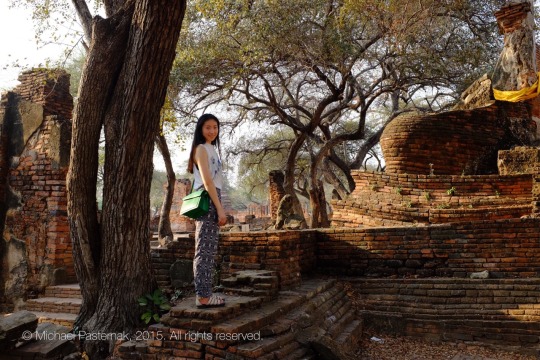

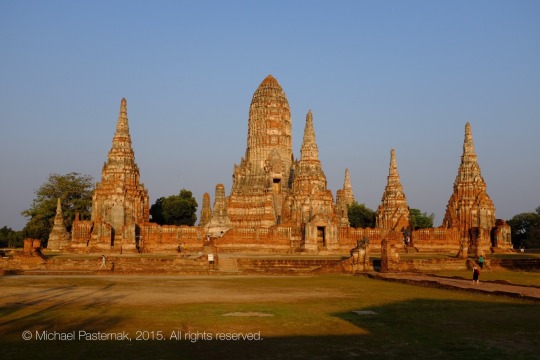


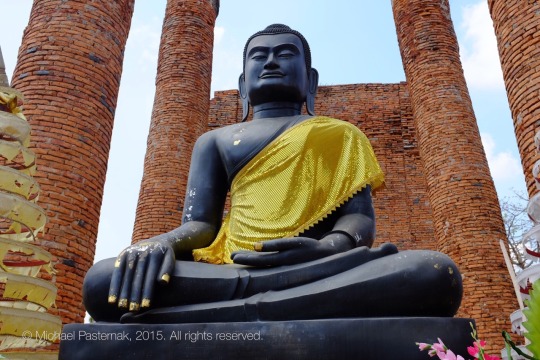
Ayutthaya was the capital of the Siamese empire from the mid-1300s to the mid-1700s when it was destroyed by the invading Burmese. A UNESCO World Heritage site today, there are dozens of ruins that give a clue as to the power and prestige it had. At its height, early explorers described it as one of the wealthiest cities in the east.
Not unlike Thai culture today, Ayutthaya kings were welcoming to traders from across Asia and Europe even allowing them to set up villages outside city walls – most of which have since been destroyed.
1 note
·
View note
Photo

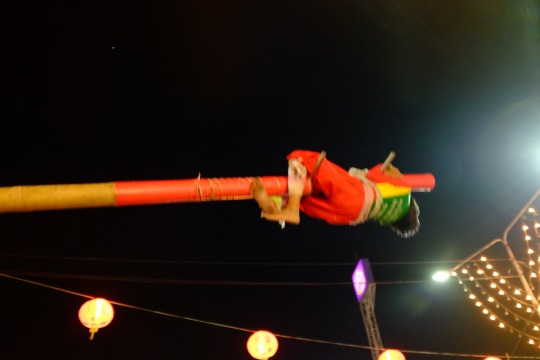
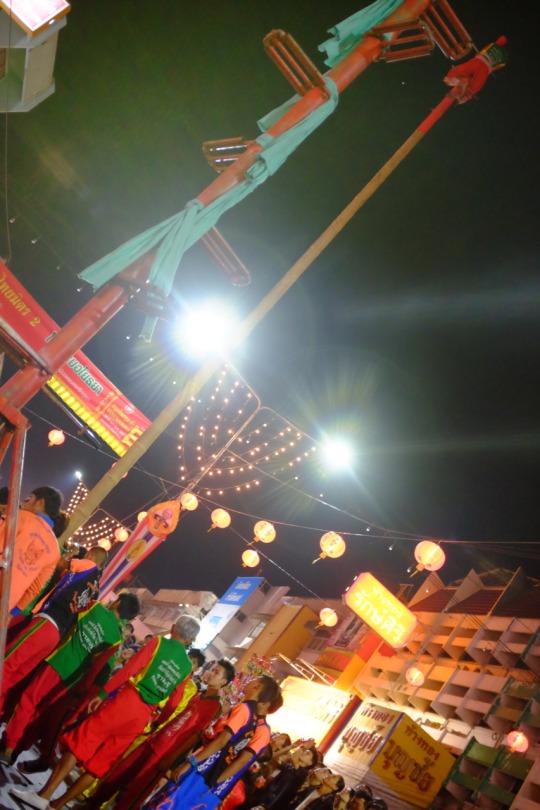
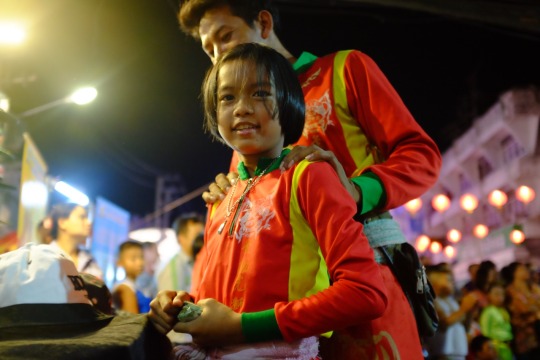
They had her sat on the ground for 10 minutes preparing. Wrapping her legs and ankle, she smiled and laughed with the others like she was on her way to play in the park with her friends. The troupe cleared a section of the crowd to accommodate the length of what I estimated to be a 40’ bamboo pole. They had to use all their strength to lower it enough to attach the young girl who clung tightly even as she was tied at the waist. Propping the pole vertically again, the girl fastened to the top, she sat level with the third story of the adjacent building.
As the crowd craned their necks to keep her in sight, another acrobat scaled the pole as easily as anyone else might climb a staircase. Once atop with the girl he worked for a couple of minutes – I assumed securing her to him. A moment later they rose and she stood on his shoulders as he held her legs. He stood on the lower of four metal rods extending from near the top of the pole. Still smiling, and completely free of the relative safety of the bamboo her head now reached the fourth story of the adjacent building.
Next he tied his right foot to the top of the pole and proceeded to extend his body horizontally, left foot placed wide lower on the pole for balance. The girl climbed out on him and was preparing what looked like another routine when she appeared to slip. He grasped twice but she fell. As the crowd gasped she slowed, and just before she reached the outstretched hands of the troupe below she stopped, dangling by one ankle attached to a cord held by the acrobat still extended sideways far above. The crowd, shocked and thrilled, loved it and showed their appreciation. He pulled her back up to his arms only to let her gently back down again to the troupe below – a smile still affixed to her young face.
He continued the routine, rocking and flexing the bamboo 10’ back and forth in any direction while the rest of the troupe held the base to keep it from tipping. Meanwhile the girl had gone amongst the crowd to collect tips. Overwhelmed and utterly entertained, I gave her 200 baht - not quite $10 – for her daring and skill. She saw what I’d given and looked back with a triumphant smile as I sat thrilled from what I’d seen, grinning stupidly from ear to ear.
1 note
·
View note
Photo
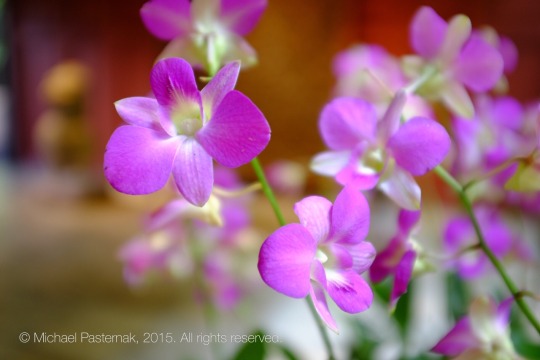
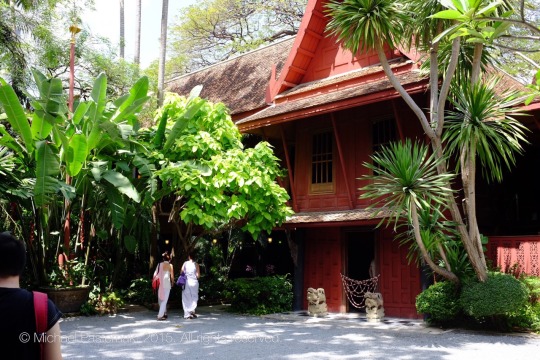
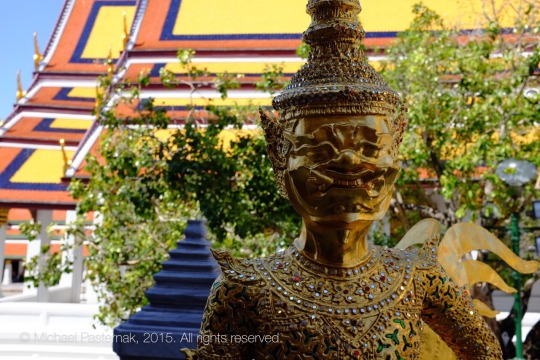
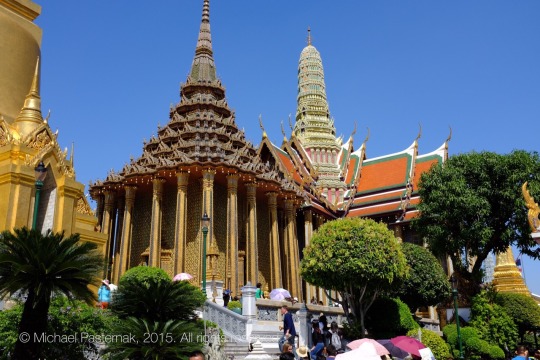
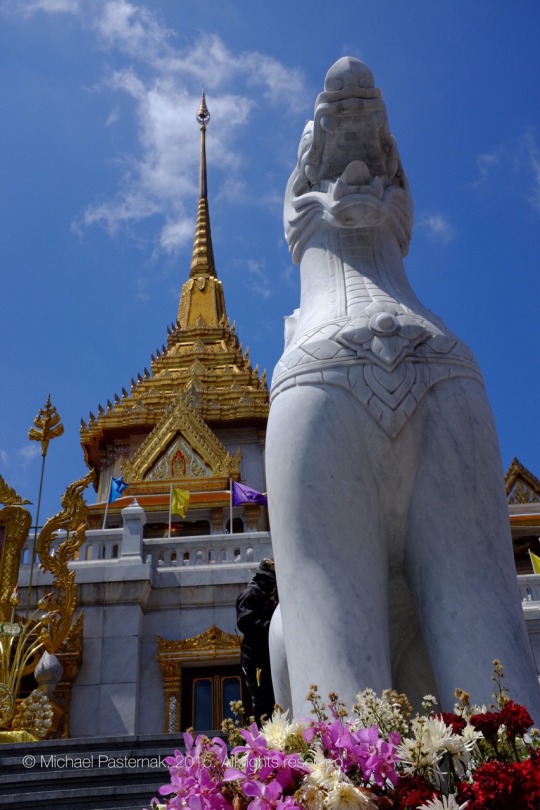



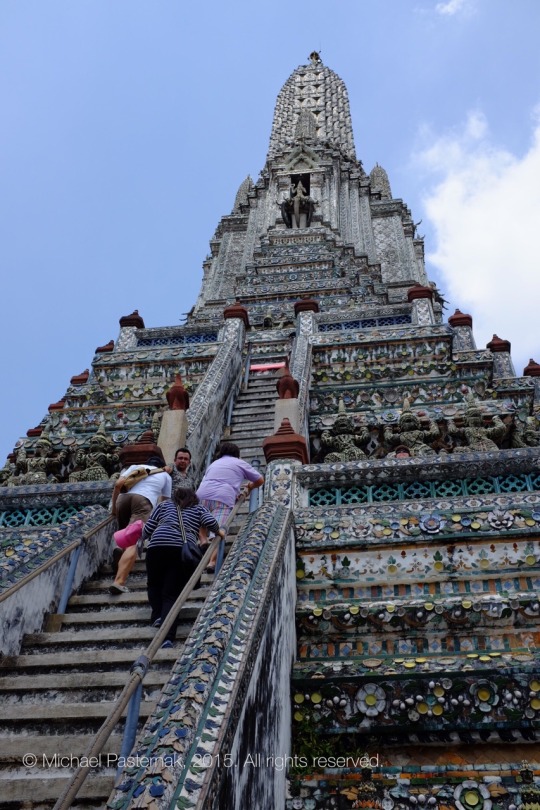
Bangkok wasn’t exactly what I’ve been looking for during my travels – another huge city with traffic and smog. However there were mellow moments to be had amongst the chaos. Here are some of my favorite shots from my few days there.
1 note
·
View note
Photo


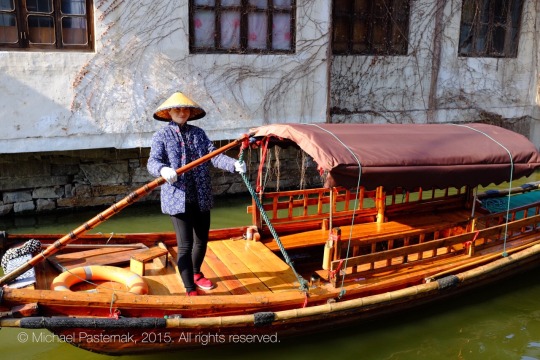
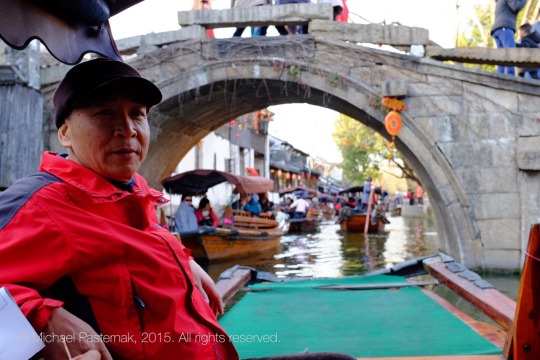
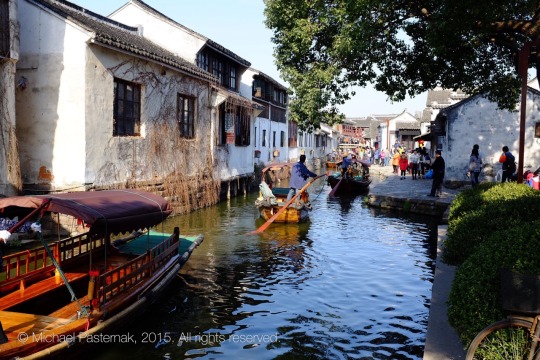

Playing catchup now. These are some shots from Chinese New Year's Day in Zhouzhouang a couple hours outside Shanghai. Weather was incredible, pollution was low and everyone had a fantastic day exploring the water town. We learned to play Wuziqi, Chinese tic tac toe, and David even beat the lady at the shop who taught us!
1 note
·
View note
Photo
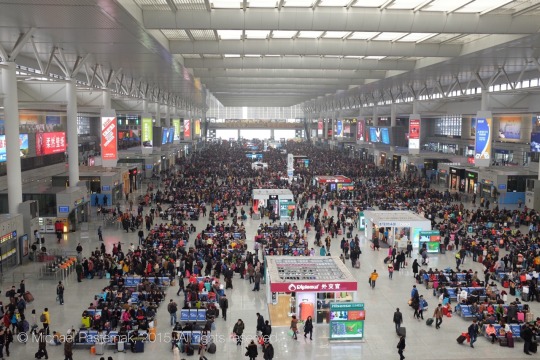

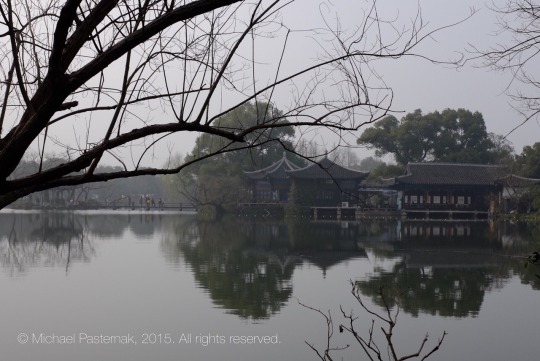
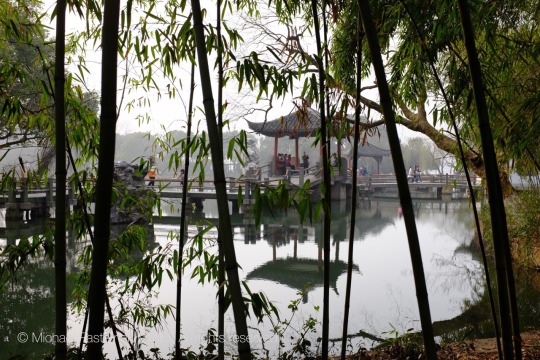
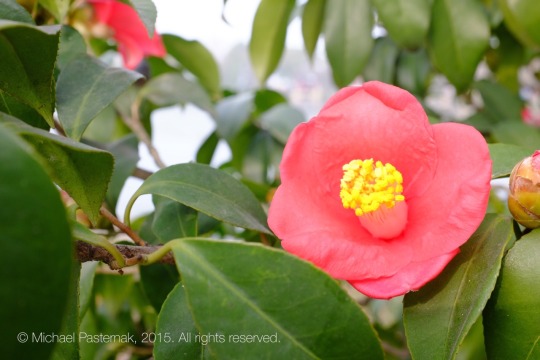


Did a little day trip to Hangzhou and cruised around West Lake. I forgot to bring my passport so I couldn't stay at the hotel I'd booked. Not a big deal just didn't get to see quite as much as I'd have liked. Still a beautiful place. I'm sure spring would be incredible.
2 notes
·
View notes
Photo
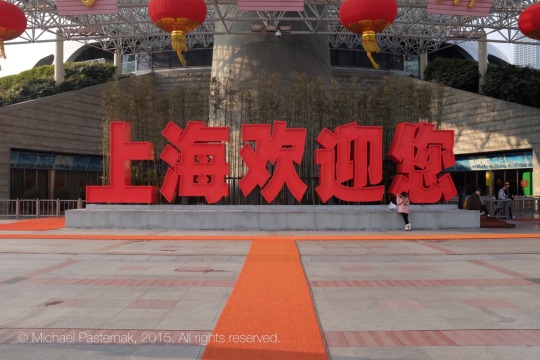

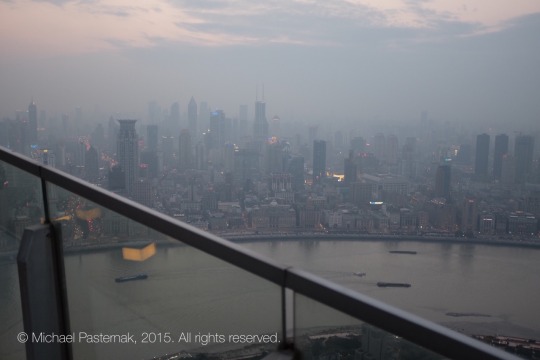

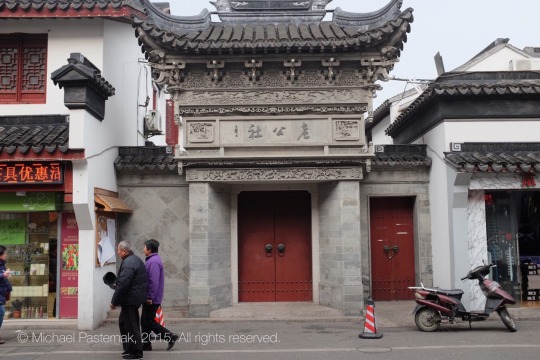
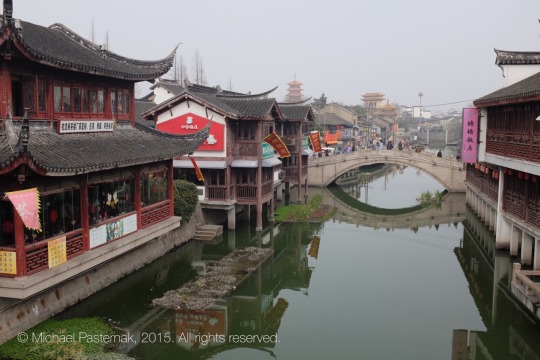
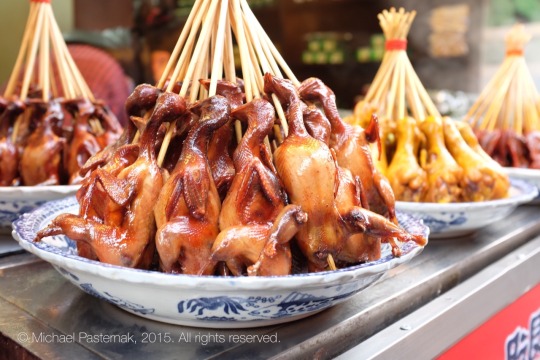
Another big couple of days in Shanghai. Kinda wish I got the duck on a stick.
2 notes
·
View notes
Photo

Going Beijing style in Shanghai. Amazing how few people wear masks here despite the crazy amount of pollution.
2 notes
·
View notes
Photo




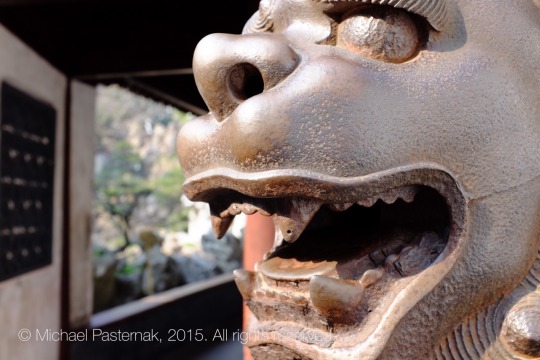

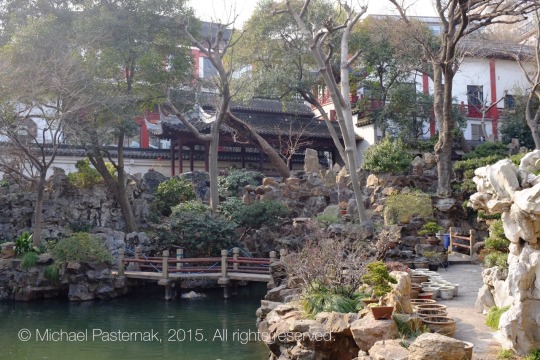
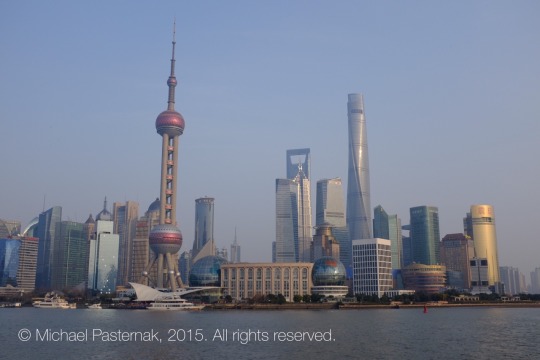
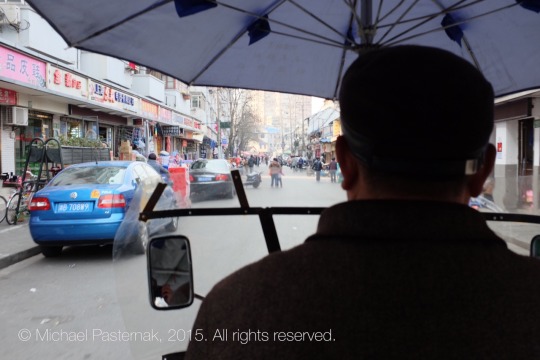
Here’s a few pics from my first couple of days in Shanghai. The ride on the back of the motor tuktuk was super fun!
1 note
·
View note